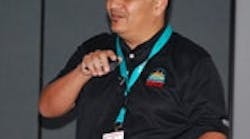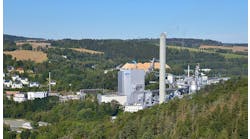Fresh water is a precious commodity, and we can't take it for granted just because it's been so inexpensive for so long. Ways to stretch our global fresh water resources include conservation, using it more efficiently, desalting it and even directly recycling wastewater into very high-quality drinkable water.
This was the main message delivered by the presenters at the Water Wastewater Industry Forum at Rockwell Automation's Automation Fair 2009 at the Anaheim Convention Center in Anaheim, Calif.
First up, Dr. Val Klump, director of the Great Lakes Water Institute at the University of Wisconsin Madison, reported that population growth, climate change, overdrawing of underground aquifers, pollution and other factors are quickly depleting the 0.34% of the planet's water that's available as fresh. "We all need to use water in fundamentally more efficient ways," said Klump. "In fact, half of the world's river basins are shared by more than one nation, and so fresh water also can be an increasingly significant cause of political strife, conflict and war. It's also very costly to pump and move water, and doing it requires using huge amounts of energy. Also, water is used to directly or indirectly produce numerous products, and this can to be done much more efficiently too."
To begin treating fresh water more respectfully and efficiently, Ken Ortega, public works director for Oxnard, Calif., reported in his presentation, "Oxnard's Water Future is Clear," that his city spent $25 million to build and open its new 7.5 million-gallon-per-day (mgd) brackish water desalting facility, which went online at the end of 2008. The three-stage, reverse-osmosis desalter's capacity can be increased to 15 mgd, but that expansion isn't scheduled yet. The desalter also is a Gold LEED-certified facility.
"We even used Rockwell Automation variable frequency drives (VFDs) to take water right from the well head and run it through the desalter in one shot. This is a lot more efficient than the traditional way of pumping and lifting it, storing it and then pumping it again. We also use electronic valves via our Rockwell Automation PLCs to throttle the process system to protect the membranes our three-stage, reverse-osmosis system from too much pressure and potential damage." In fact, implementing these efficiencies even earned Oxnard a $3-million federal grant.
The public works department also is seeking bids on a $61-million Advanced Water Processing Facility (AWPF), which is expected to open in late 2011 or early 2012. Both the AWPF and the desalter are part of Oxnard's 12-year Groundwater Recovery Enhancement and Treatment (GREAT) program, which is designed to meet the city's water needs through 2030. These facilities will purify Oxnard's water down to 25 total dissolved solids (TDS) units. By comparison, bottled water is usually only just under 100 TDS.
To serve the oceanfront city's 200,000 residents, Oxnard Public Works imports and blends water from California's Delta area, Santa Clara River and some more northern sources. "We say that we're water blenders extraordinaire because we mix water from a variety of sources to meet the needs of our residents," said Ortega. "Next, we have to manage costs and sustainability, and the challenges there are changing precipitation and climate, endangered species, conveyance weaknesses, inadequate storage, water cutbacks and land-use restrictions. Whatever your beliefs or political affiliations, something is going on with climate change, and there are going to be marked changes in how we manage and deliver our water for generations to come. As a result, we stepped up our conservation program, enforced water waste prohibitions and raised our tiered conservation rate."
Ortega estimated that Oxnard will need an additional 15,000 acre-feet of water per year by 2020, and he reported that the municipality's GREAT program will help the city accomplish that goal and do a lot of it with local water from its new desalter and AWPF. This also gives the city valuable water credits that it can use to aid its existing wells and water source efforts. "We used to treat and release 20 mgd to 30 mgd of effluent to the Pacific Ocean, and we can't afford to do it that way anymore. The AWPF will deliver water to non-potable and agricultural users, and also allows us to inject water back into the group to prevent salt intrusion and stabilize problems caused by former over-pumping."
"I attended Automation Fair many years ago, and I wondered if all the wonderful products I saw on the exhibit floor could really work so successfully. Well, over the last 10 years, I think Rockwell Automation and its products have really measured up to the test."




